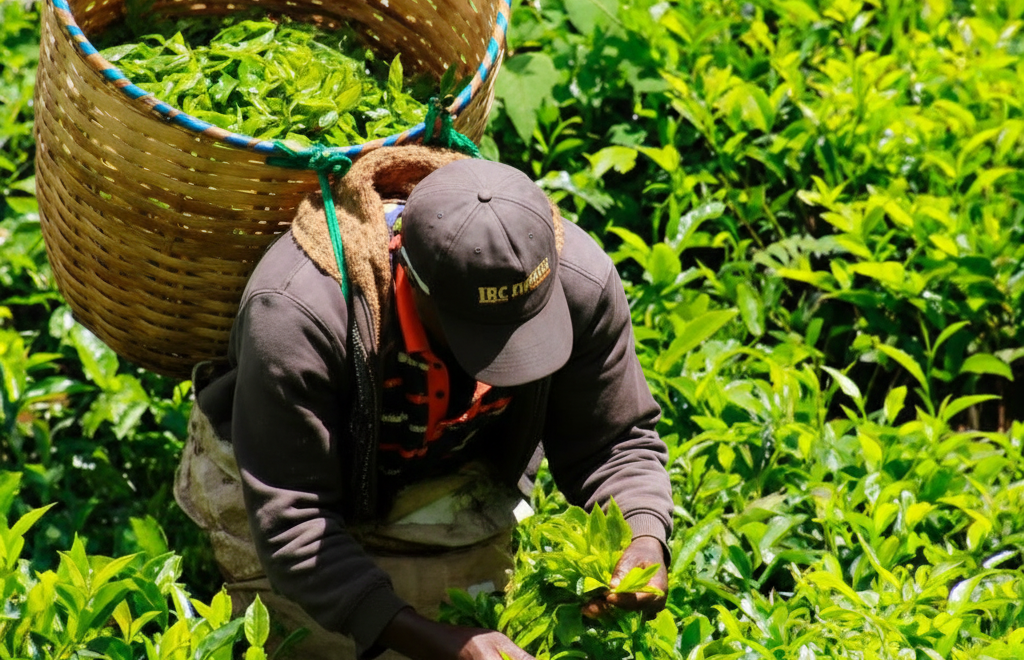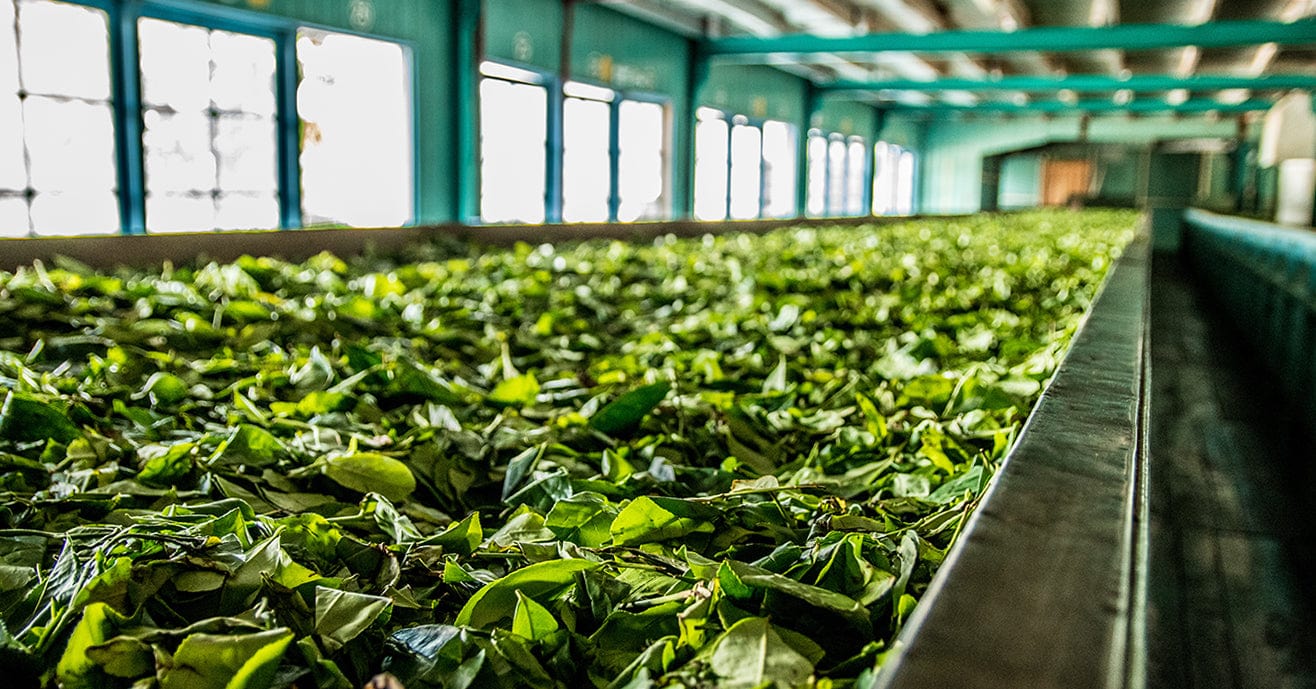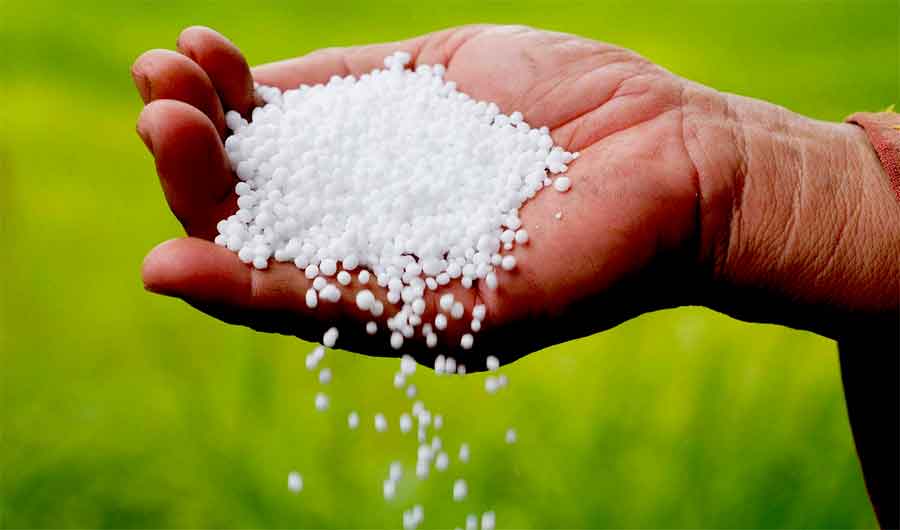Kenya’s tea factories will declare annual bonus rates next week, but industry signals show farmers should brace for slightly reduced payouts. A convergence of climate shocks, currency volatility, delayed farm inputs, and global price pressures has undermined profitability, threatening the livelihoods of over 680,000 smallholder farmers.

Key Highlights
- Green leaf volumes fell 9.9% with Q1 2025 output dropping 18.8% due to erratic rainfall
- Average export price dropped from US$2.47/kg to US$2.27/kg
- Stronger shilling cut export earnings in local terms despite stable dollar revenues
- Fertilizer supply disruptions reduced farm productivity
- Black tea glut pushed Mombasa auction prices to US$2.09/kg mid-2025
- Bonus decline expected, 2025 tea bonus payouts will be lower than 2024’s record highs
- Transparency, crop insurance, market diversification, and climate-resilient farming are critical to protect farmers
The Human Reality
“I delivered 2,500 kilograms of green leaf this year, just like last year,” says Hezron Kamau, a farmer from Nyeri County. “But the rains failed, fertilizer came late, and now they say ‘market challenges.’ My family of seven depends on that bonus for school fees and food.”
Factory directors acknowledge the storm. “We are dealing with some forces beyond our control,” admits one KTDA director. “Production is down, exchange rates have hurt revenues, and auction prices remain depressed. The bonus cannot match last year’s record.”

The Devastating Numbers
𝐆𝐫𝐞𝐞𝐧 𝐥𝐞𝐚𝐟 𝐭𝐡𝐫𝐨𝐮𝐠𝐡𝐩𝐮𝐭: Kenya’s factories processed 558.4 million kilos between July 2024 and June 2025, down from 619.9 million kilos in 2023/24— a 9.9% decline. First-quarter 2025 production alone dropped 18.8% year-on-year due to erratic rainfall according to the Tea Board of Kenya.
𝐀𝐮𝐜𝐭𝐢𝐨𝐧 𝐩𝐫𝐢𝐜𝐞𝐬: The average export price fell from US$2.47/kg in 2023/24 to US$2.27/kg in 2024/25.
𝐄𝐱𝐜𝐡𝐚𝐧𝐠𝐞 𝐑𝐚𝐭𝐞 𝐒𝐡𝐨𝐜𝐤: In FY 2023/24, the Kenya shilling weakened sharply, at one point trading above KES 160 per US dollar before stabilizing. By contrast, in FY 2024/25 the currency appreciated, averaging about KES 129 per dollar. While this looks like good news on paper, it reduced the shilling value of tea export earnings — meaning farmers were paid fewer shillings for every dollar earned abroad.
𝐏𝐫𝐨𝐣𝐞𝐜𝐭𝐞𝐝 𝐛𝐨𝐧𝐮𝐬: KTDA paid out Sh. 89.2 billion to small-scale farmers for green-leaf deliveries in the financial year ending June 30, 2024. This year, that figure will be lower, given the current industry realities. The term “slight decrease” reflects the expectation that the bonus payout per kilogram of green leaf, to be announced next week, will not match last year’s levels. Farmers must brace for this adjustment while hoping that future seasons will bring stronger performance and improved bonuses.

Four Critical Factors Behind the Decline
1. Weather Catastrophe
In April 2025, Kenya produced 51.78 million kgs of tea, which was 3.58% less compared to production in April 2024. This was reflected from a shrinkage in production in both East and West Rift regions, with West of Rift reducing by 4.52% and East of Rift reducing by 2.56% an effect resulting from low rainfall in critical growth months. The KTDA smallholder production also reduced by 7.74%.
2. Exchange Rate Squeeze
The KES/USD appreciation meant each dollar earned at auction translated into fewer shillings. For an export sector that generated US$1.4 billion in 2024, every KES 1 movement translates to roughly Sh680 million in farmer income shifts.
3. Fertilizer Crisis
Over 700,000 farmers faced delays in the delivery of subsidized fertilizer in 2024, with some consignments arriving months late. Agronomists estimate the delays reduced bush productivity by 15–25%.
4. Market Price Collapse
Global oversupply pushed Mombasa auction prices down to US$2.09/kg by mid-2025. Despite tea being Kenya’s top foreign exchange earner, the oversupply prevented recovery, forcing some factories to hold unsold stock or adopt reserve pricing strategies.

Economic Impact: Beyond the Numbers
The projected reduction in bonuses will hit over 680,000 farming households. For instance, using a rural income multiplier of 2.5, every Sh1 billion cut removes nearly Sh2.5 billion from local economies. The effects are immediate:
- Parents struggling with school fees arrears
- Families postponing healthcare
- Rural traders reporting slower sales
- Rising social tensions in tea-growing counties
Voices from the Crisis
Farmers’ Desperation
“The bonus is everything,” says Mary Wanjiku, a Nyeri widow. “Monthly payments barely cover basics. Without a strong bonus, survival becomes impossible.”
Directors’ Dilemma
“We are committed to transparency, but we cannot deny the economic realities”

What Needs to Happen Now
- 𝐈𝐦𝐦𝐞𝐝𝐢𝐚𝐭𝐞 𝐌𝐞𝐚𝐬𝐮𝐫𝐞𝐬
- Full disclosure of bonus calculations (sales, costs, reserves).
- Crop insurance schemes to manage climate risk.
- Fertilizer supply chain reforms to guarantee timely distribution.
- Currency hedging tools for export revenues.
- 𝐋𝐨𝐧𝐠-𝐓𝐞𝐫𝐦 𝐒𝐨𝐥𝐮𝐭𝐢𝐨𝐧𝐬
- Diversify markets beyond Mombasa auctions.
- Invest in premium orthodox and specialty teas to escape bulk-price traps.
- Adopt climate-resilient tea clones.
- Enhance farmer participation in governance and revenue audits.
The Bottom Line
The data confirms what farmers fear: 2025 bonuses will not match last year’s record highs. Production shrank nearly 10%, auction prices slid nearly 8%, and input/currency shocks compounded the pain.
But this crisis also presents an opportunity. With transparent communication, structural reforms, and collective resilience, Kenya’s tea industry can turn its greatest weakness into a pathway to long-term sustainability.
The question is no longer if bonuses will fall — they will. The real question is whether Kenya will seize this moment to rebuild the industry’s resilience for the next generation of farmers.
Editorial Note
This analysis represents expert commentary on economic policy and political developments. All information has been fact-checked and cross-verified from reliable sources. The views expressed are based on professional analysis and independent research.

